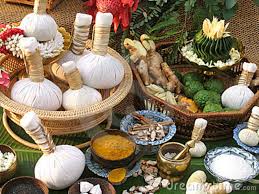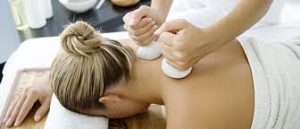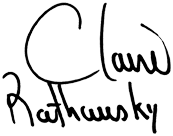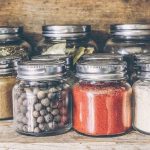
Compresses are nothing more than a piece of cloth soaked in a tea or tincture of an herb and applied to the affected area of the body. Cotton balls can also be used to apply the compress.
You might have used a compress before without even knowing it. Applying a wet washcloth to your forehead when you have a headache is a form of a compress, even when no herbs are involved. Placing wet teabags on the eyelids to relieve tired or sore eyes is another common remedy.
If you want to make a cold compress, make a strong tea with the herb you want to use and allow it to cool. Soak cotton balls or a strip of fabric in the mixture. Place cotton balls on a clean cloth to make it easier to apply them to your skin. Another piece of fabric or a scarf can be used to tie the compress to your body.

A prepared tincture can also be used as a compress. Just mix a dropper full of tincture with a quarter cup of water and soak your cloth as before, or follow the directions on the bottle.
Make a warm compress from freshly steeped tea by soaking the cloth while the tea is still warm. Again, you can reapply the compress when it has cooled down by soaking the fabric again in the warm tea.
Most Popular Herbal Compresses.
Here are a few common herbs you might want to use as compresses for minor injuries or ailments.
Arnica: An antibiotic, anti-inflammatory and pain reliever, arnica is a wonderful herb to have on hand for minor aches and pains. It is particularly useful for those suffering from carpal tunnel syndrome, and it can prevent bruising and swelling when the skin has been injured. It can reduce pain and stiffness after a hard workout and may be effective at dulling postoperative pain. The tincture should be diluted three to 10 times before being used as a compress. It should not be taken internally and should not be used by pregnant women. It may cause eczema if used for long periods.
Chamomile: Commonly used as a relaxant, chamomile is also an antihistamine that has anti-inflammatory properties. It is useful for treating minor cuts, scrapes and abrasions, as well as in managing eczema. German chamomile instead of Roman chamomile should be used, as Roman chamomile can cause allergic reactions. Chamomile is commonly found in tea bags. Make a tea using one or two bags in about half a cup of water and allow to steep for five or 10 minutes before making your compress. Chamomile has blood-thinning properties and should not be used by people on blood thinners.
Lavender: Lavender essential oil is a wonderful treatment for headaches. A compound in lavender increases your threshold for pain, so you will not feel the pain of a mild headache when you use lavender. It also inhibits reactions that cause inflammation and pain. Lavender can also be helpful for treating burns, wounds, eczema and acne. Compresses can be made from lavender tea made from one or two teaspoons of lavender flowers steeped in a cup of water, or simply apply a few drops of lavender oil to the temples and apply a cold washcloth to ease headache pain. Lavender oil should not be taken internally.
Peppermint: Another good choice for the treatment of headaches, peppermint oil is also helpful in relieving pain from muscle sprains and strains. The easiest way to use peppermint oil is to massage a few drops onto the affected area and cover with a hot or cold compress.
Compresses are a wonderful addition to your herbal medicine arsenal. Keeping a few tinctures or teas on hand will not cost you a lot of money or space in your medicine cabinet, but they can be very helpful when minor injuries happen.
Wishing you good health and happiness your friends,


